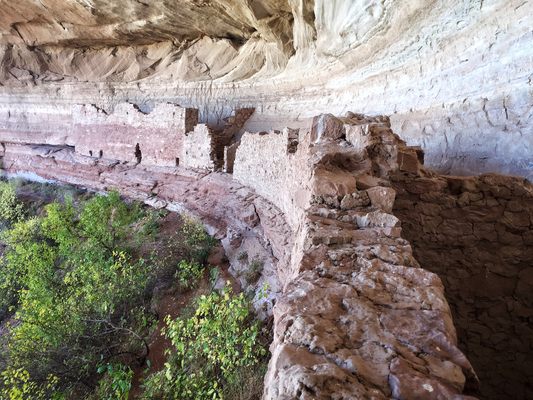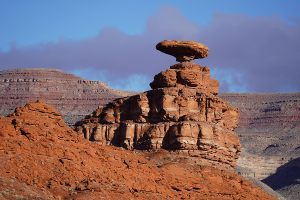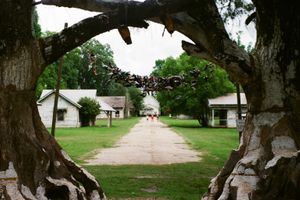About
Outside Bluff, Utah, a massive 100-foot-deep alcove looms above the San Juan River. Look closer, and you'll see the 17 Room Ruin that the natural shelf has protected from the elements for nearly a thousand years.
It's estimated the dwellings were constructed sometime in the 1200s, and would have been home to three or four Ancestral Puebloan families. The ruin is comprised of between 14 and 18 rooms (though most archaeologists agree on 17) lined single file against the narrow cliff ledge in the alcove.
The narrow rooms are accessed through a rooftop doorway, and connect to one another via internal doorways. Some of them were once multi-story, evidenced by the height of the walls and holes that would have held timber beams to support a second floor. Peephole windows look out onto the green valley below, where the Anasazi inhabitants would have cultivated their crops.
Graffiti covers the back wall of the ruins, where the rooms meet the natural alcove. The handprints of the rooms' original inhabitants, centuries deceased, are surrounded by colorful dots and patterns. Toward the right side of the ruin, more modern carvings read, "HOWELL" and, "NETTLE Feb. 25 1896." These are both from the party that discovered the ruins, an offshoot of the famous Hayden Survey which mapped the American West in the late 19th century. The surveyors left their own mark on the site (generally frowned upon), which has now become a new layer of history upon the ancient ruins.
While most Ancestral Puebloan ruins typically face South, the 17 Room Ruin faces North, meaning it sits in cool shade facing a lush valley. Many hikers find the ruins a pleasant spot to rest, as well as a thrilling insight into how Southwestern Native Americans lived nearly a thousand years ago.
Related Tags
Know Before You Go
There used to be a footbridge over the river, but after a flood in 2007, it has not been reconstructed.
You can still access the ruins by taking US 191 South across the San Juan River from Bluff and then onto county road 438 (you can also take 441 as the roads will intersect, however, 438 will be paved until it intersects with 438.) The is well maintained until the ruins, at which point the road is rather hard to even fully discern between what is a road and what is a dry wash bed. A four-wheel-drive vehicle is needed to make it to the ruins. There's also a "don't litter" sign right near the road before the hill to climb up to the ruins. Be mindful of nearby Navajo homesteads and don't trespass on their lands or be unnecessarily loud.
Community Contributors
Added By
Published
May 10, 2017























